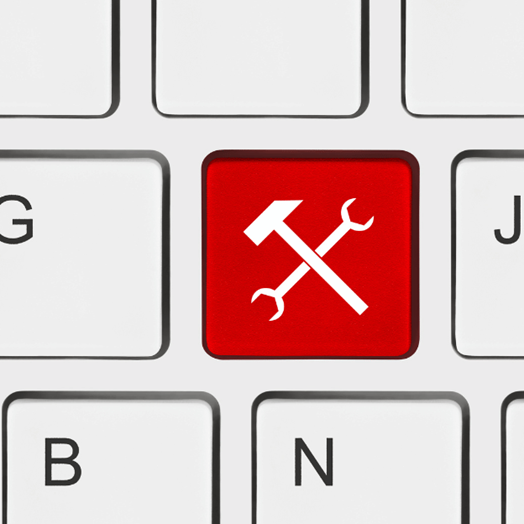The Ultimate Beginner’s Guide to Website Development

In today’s digital-first world, your website is often the first impression people have of you or your business. Whether you’re launching a personal blog, an e-commerce store, or a company portfolio, understanding website development is key. This guide will walk you through what website development is, how it works, what you need to learn, and how to get started even if you’re an absolute beginner. Plus, if you’re looking to boost your skills for career growth, we’ll also touch on how a business development certification can complement your web development knowledge and open new professional opportunities.
What Is Website Development?
Website development is the process of building and maintaining websites. It encompasses everything from coding and designing web pages to managing servers and databases. This is a broad field that can be split into two major areas: front-end (what users see) and back-end (what happens behind the scenes).
But it’s not just about writing code. Website development includes planning, designing layouts, managing content, and ensuring security. In short, it’s everything that makes a website functional, accessible, and visually appealing. For those looking to enhance their website’s visibility and performance, exploring SEO classes in Ahmedabad can be a great way to learn how to optimize content and improve search engine rankings effectively.
Why Does Website Development Matter?
A website isn’t just a digital placeholder it’s your online identity. Here’s why strong web development is essential:
- Credibility: A well-built site helps people trust your brand.
- Visibility: A well-optimized website improves your chances of being found online.
- Accessibility: A good website is available on all device’s desktops, tablets, and phones.
- Functionality: Your site needs to work fast, reliably, and securely.
Whether you’re a small business owner or an aspiring developer, understanding how websites are made gives you more control over your digital presence.
The Difference Between Web Development and Web Programming
Although often used interchangeably, these terms have subtle differences:
- Web development includes planning, designing, coding, launching, and maintaining a site. It covers both technical and creative aspects.
- Web programming focuses specifically on writing the code that makes a website function usually on the back end or in interactive front-end features.
In short, programming is a part of development, but development is a broader umbrella that includes non-coding responsibilities too.
How the Internet Works (In Simple Terms)
To truly understand web development, it helps to know how the web functions:
- Servers are powerful computers that host websites.
- Clients (like your browser) request web pages.
- Domain names (like google.com) point to IP addresses via DNS.
- Protocols like HTTP and HTTPS manage communication between client and server.
- The server returns files (HTML, CSS, JS) that your browser assembles into the webpage you see.
Every time you visit a website, you’re triggering hundreds of these invisible interactions in seconds.
Front-End vs Back-End Development
Website development can be split into two main categories:
Front-End Development
This deals with the parts of a website users interact with. It’s built using:
- HTML: Structures content (headings, paragraphs, images).
- CSS: Styles the content (fonts, colors, layout).
- JavaScript: Adds interactivity (buttons, forms, animations).
Front-end developers ensure that websites look good and function well across all devices and browsers.
Back-End Development
This is everything that happens behind the scenes like data storage and user authentication. It involves:
- Languages: Python, PHP, Ruby, Node.js, Java, etc.
- Databases: MySQL, MongoDB, PostgreSQL.
- Servers & APIs: Handle user requests, retrieve data, and return responses.
Back-end developers focus on logic, efficiency, and security.
Full-Stack Development
A full-stack developer understands both front-end and back-end. They can build entire web applications from start to finish. This role is in high demand because full-stack developers can handle an entire project, troubleshoot more effectively, and bridge gaps between teams.
Content Management Systems (CMS)
Not every site needs to be coded from scratch. A CMS is software that lets users build and manage a website without coding. Some popular options include:
- WordPress (great for blogs and small business sites)
- Shopify (for e-commerce)
- HubSpot CMS (for marketing-focused sites)
- Wix / Squarespace (drag-and-drop builders for beginners)
A CMS is ideal if your primary goal is managing content rather than learning to code.
The Website Development Process

Website development is a journey that follows a structured process. Here’s what it usually looks like:
1. Planning
Before writing any code, define your goals:
- Who is your audience?
- What problem does your website solve?
- What kind of pages do you need (home, about, services, blog)?
- Do you need a CMS, or will you code it yourself?
Proper planning ensures that the site aligns with business goals and user needs.
2. Wireframing & Design
Wireframes are blueprints for your website layout. They’re like sketches that outline where elements (images, buttons, text) will go.
After wireframing, you’ll move into design choosing colors, fonts, and branding elements. Tools like Figma, Sketch, or Adobe XD help here.
3. Front-End Development
Once the design is ready, developers turn it into a real web page using:
- HTML for content structure
- CSS for styling and layout
- JavaScript for interactive features
This stage is all about making the site look and feel as planned.
4. Back-End Development
Now it’s time to build the invisible parts things like:
- Creating databases
- Setting up servers
- Handling form submissions
- Managing user accounts and passwords
- Creating APIs for front-end to interact with
If you’re using a CMS, much of this might already be handled for you.
5. Testing
Before launch, test everything. Make sure:
- The site loads fast
- All features work across browsers
- Mobile responsiveness is on point
- Forms submitted correctly
- No broken links or security gaps exist
Tools like Google Lighthouse, Chrome DevTools, and browser testing suites help identify issues.
6. Launch
When everything works as expected, it’s time to go live. You’ll need to:
- Choose a domain name
- Select a hosting provider
- Upload your files or CMS
- Configure DNS and SSL (for HTTPS)
Congratulations, your site is now public!
7. Maintenance
After launch, the work isn’t over. You’ll need to:
- Fix bugs
- Update content
- Apply security patches
- Optimize for SEO and performance
- Monitor analytics
A website is a living entity it needs care to thrive.
Key Tools and Technologies to Learn

Here’s a list of tools you might use as a developer:
- Code Editors: VS Code, Sublime Text
- Version Control: Git, GitHub
- Frameworks: React, Angular, Django, Laravel
- Build Tools: Webpack, Gulp
- APIs: REST, GraphQL
- Databases: MySQL, MongoDB
- DevOps: Docker, NGINX, AWS
You don’t need to master them all at once. Start small and build your stack over time.
Learning Resources for Beginners
Learning web development has never been more accessible. Here are some free and paid platforms to help:
- freeCodeCamp – Hands-on coding practice and projects
- MDN Web Docs – Detailed documentation from Mozilla
- Codecademy / Coursera / Udemy – Structured lessons and certifications
- Stack Overflow – Ask and answer coding questions
- YouTube – Tons of tutorials, walkthroughs, and project videos
And of course, practice is key. Build simple projects, a portfolio site, a to-do app, a blog before jumping into big, complex systems.
Tips for New Developers
- Start with HTML & CSS – They’re the foundation. You can’t build without them.
- Learn by Doing – The best way to learn is to build. Break things. Fix them. Repeat.
- Keep Projects Small – Don’t try to build Facebook on your first try.
- Be Patient – Frustration is part of the process. Persistence beats talent.
- Ask for Help – Use forums, mentors, and communities when stuck.
Final Thoughts
Website development is a rewarding skill that empowers you to build your own corner of the internet. It doesn’t matter if you’re a small business owner, an aspiring developer, or just a curious learner knowing how websites work gives you a powerful advantage.
Understanding website development also lays the foundation for effective Internet Marketing, helping you create websites that not only function well but also attract and engage the right audience.
Start small, keep learning, and most importantly, enjoy the process. The internet is constantly evolving, and so will your skills.